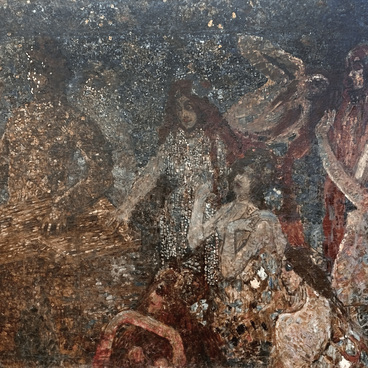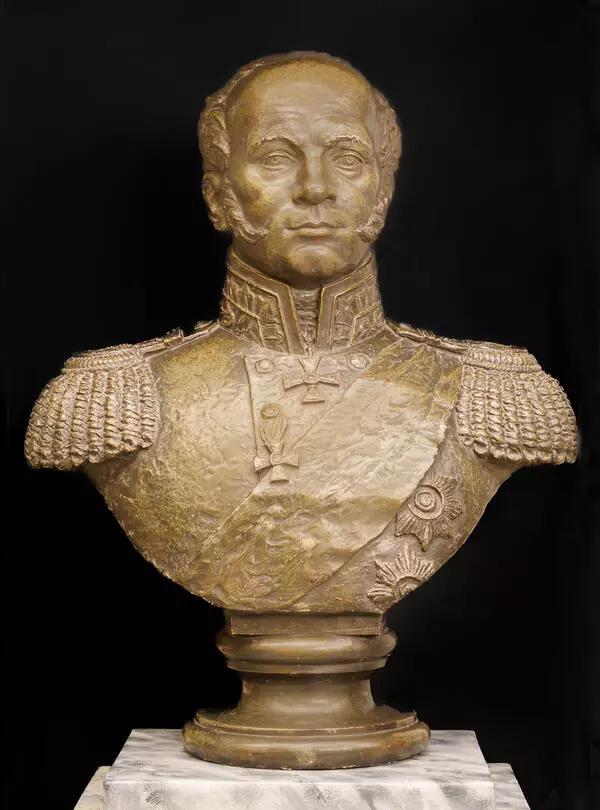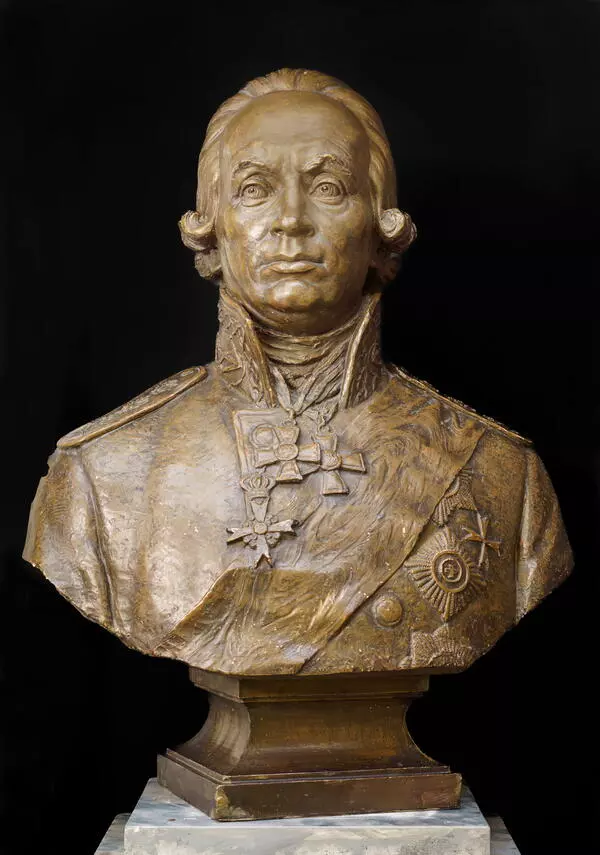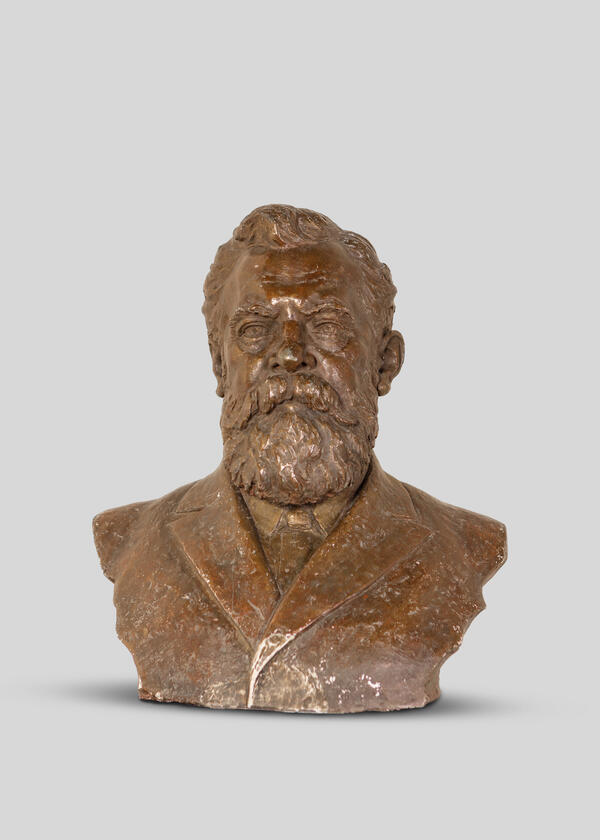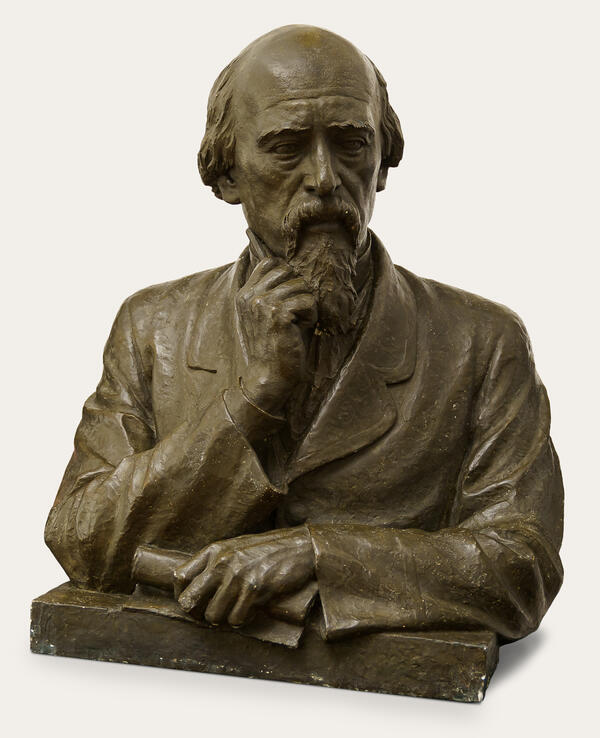Nikolay Vasilievich Dydykin (1894–1975) was born in Palekh, a famous center of Russian folk art, into a family of icon painters. He learned his skills from both his parents and teachers in the icon painting workshop of Nikolay Mikhailovich Sofonov. Already in his youth, he was invited to restoration work and entrusted with the renewal of frescoes.
In the 1920s, the future sculptor studied at the Art and Industrial College. One of his teachers was Vsevolod Vsevolodovich Lishev, a Soviet monumentalist. In the 1930s, Nikolay Vasilievich Dydykin began to actively participate in exhibitions.
The 1943 “Portrait of Zoya Alexandrovskaya” was painted in the midst of the Great Patriotic War, when Nikolay Dydykin was in the city of Ivanovo. On a dimmed brown background, the artist created a shoulder-length portrait of a young girl in a military-style ear-flapped hat. She is wearing an overcoat with collar patches. Light brown hair can be seen from under the hat, angled eyebrows frame dark green eyes. A determined look reveals to the viewer the image of a Soviet warrior woman.
The sculptor learned the story of the “heroically deceased” Zoya Sergeevna Alexandrovskaya from the newspaper Komsomolskaya Pravda. In July 1941, she was accepted as a medical instructor in one of the detachments of the Special Purpose Separate Motor Rifle Brigade. From February 22 to 23, 1942, Zoya Sergeevna’s detachment crossed the front line near the Belarusian city of Orsha and came under heavy fire. Zoya Alexandrovskaya was wounded in the chest and arm, she lost consciousness and was captured by the enemy. Half-dead from her wounds, she was taken by the German police around the villages so that the residents would recognize her as a partisan.
When Alexandrovskaya’s detachment returned to Moscow, the commander reported to the leadership that Zoya Sergeevna had died heroically. But despite everything, she remained alive. In spite of numerous interrogations and abuse, Zoya Sergeevna did not give out any information, was able to escape, found a partisan detachment and remained in its team serving until the end of the war.
After the war, Zoya
Sergeevna devoted her life to teaching. In the early 1960s, after the death of
her mother, she and her husband moved to Gorlovka, where she worked at boarding
school No. 1 as a physical education teacher and then as a preschool teacher.

